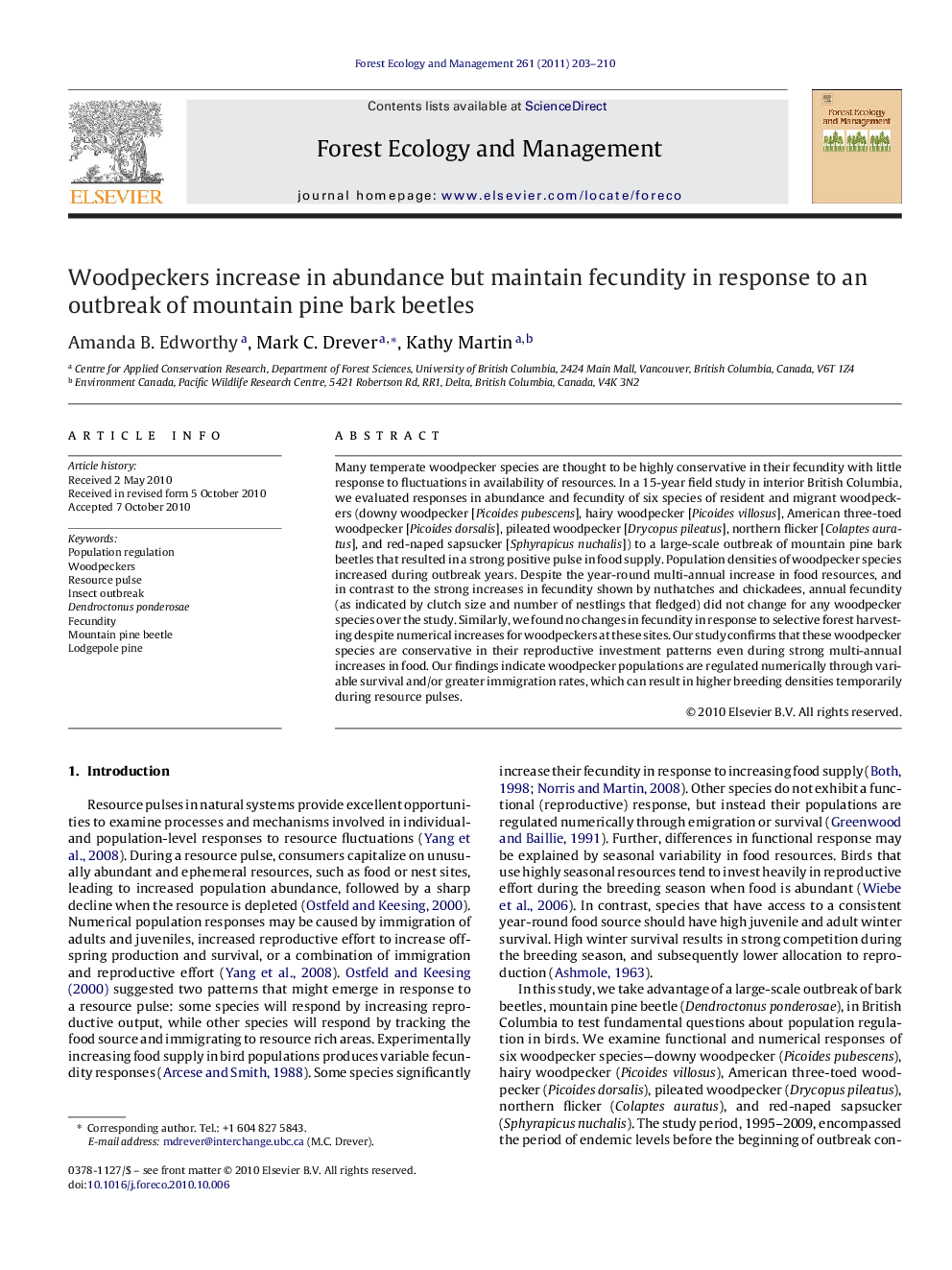| Article ID | Journal | Published Year | Pages | File Type |
|---|---|---|---|---|
| 88166 | Forest Ecology and Management | 2011 | 8 Pages |
Many temperate woodpecker species are thought to be highly conservative in their fecundity with little response to fluctuations in availability of resources. In a 15-year field study in interior British Columbia, we evaluated responses in abundance and fecundity of six species of resident and migrant woodpeckers (downy woodpecker [Picoides pubescens], hairy woodpecker [Picoides villosus], American three-toed woodpecker [Picoides dorsalis], pileated woodpecker [Drycopus pileatus], northern flicker [Colaptes auratus], and red-naped sapsucker [Sphyrapicus nuchalis]) to a large-scale outbreak of mountain pine bark beetles that resulted in a strong positive pulse in food supply. Population densities of woodpecker species increased during outbreak years. Despite the year-round multi-annual increase in food resources, and in contrast to the strong increases in fecundity shown by nuthatches and chickadees, annual fecundity (as indicated by clutch size and number of nestlings that fledged) did not change for any woodpecker species over the study. Similarly, we found no changes in fecundity in response to selective forest harvesting despite numerical increases for woodpeckers at these sites. Our study confirms that these woodpecker species are conservative in their reproductive investment patterns even during strong multi-annual increases in food. Our findings indicate woodpecker populations are regulated numerically through variable survival and/or greater immigration rates, which can result in higher breeding densities temporarily during resource pulses.
Research highlights▶ Population densities of woodpecker species increased during a large-scale outbreak of mountain pine beetles in British Columbia, Canada. ▶ Annual fecundity (as indicated by clutch size and number of nestlings that fledged) did not change for any woodpecker species over the study. ▶ Woodpecker species are conservative in their reproductive investment patterns even during strong multi-annual increases in food.
